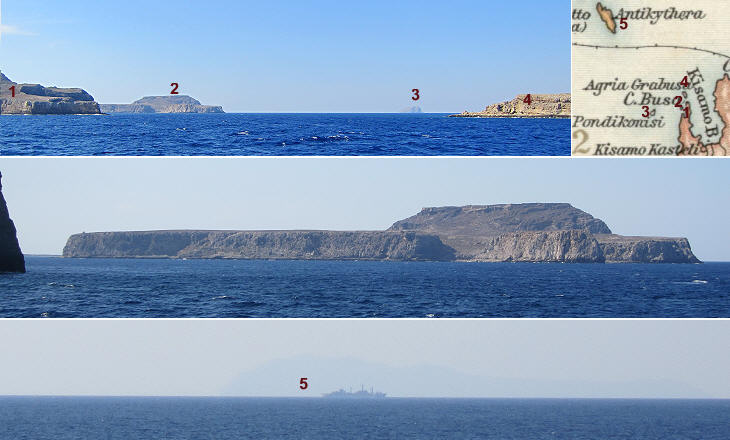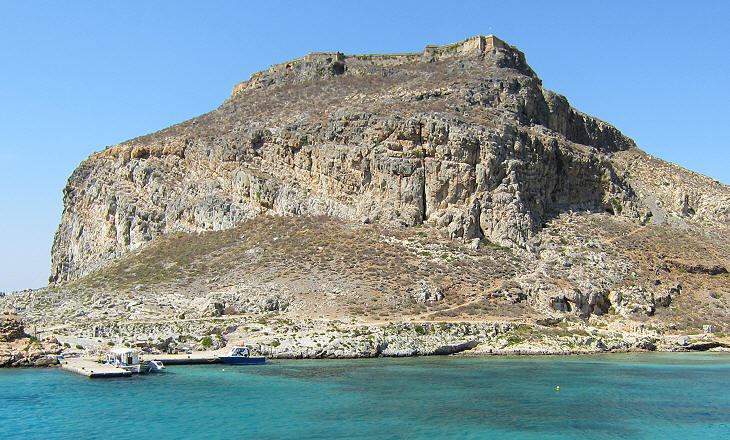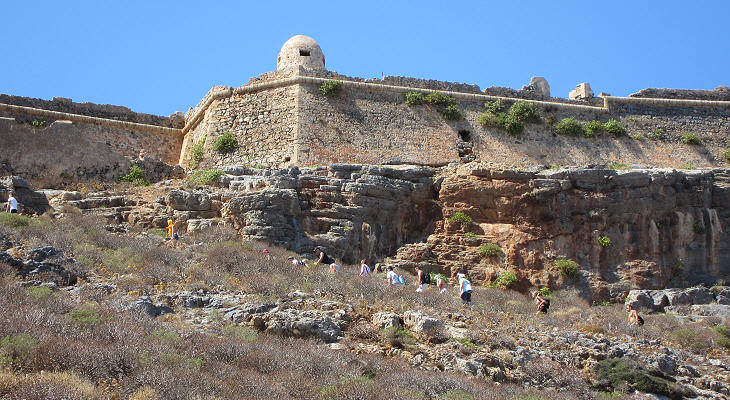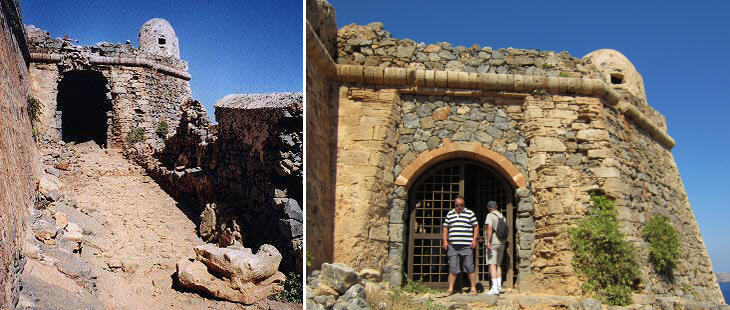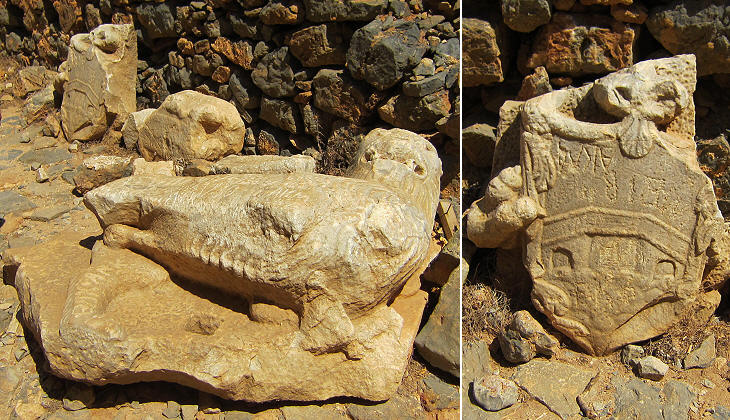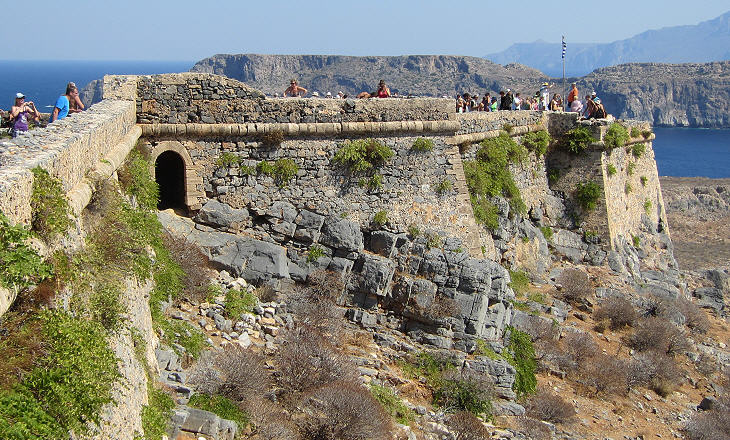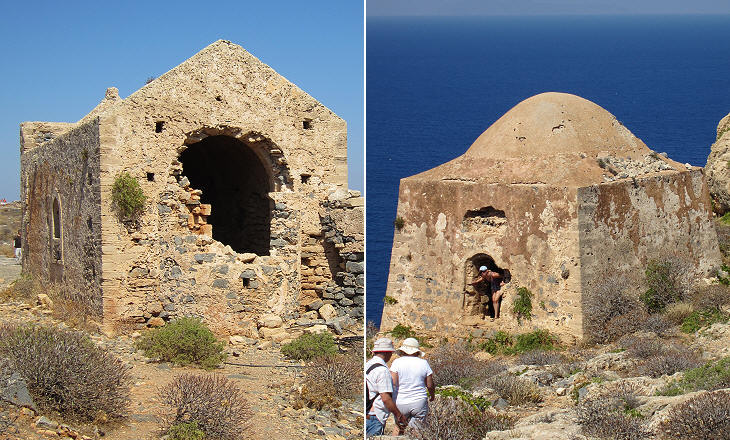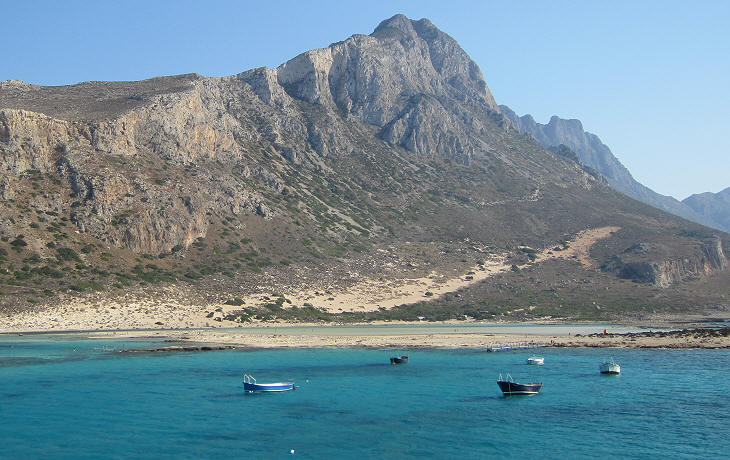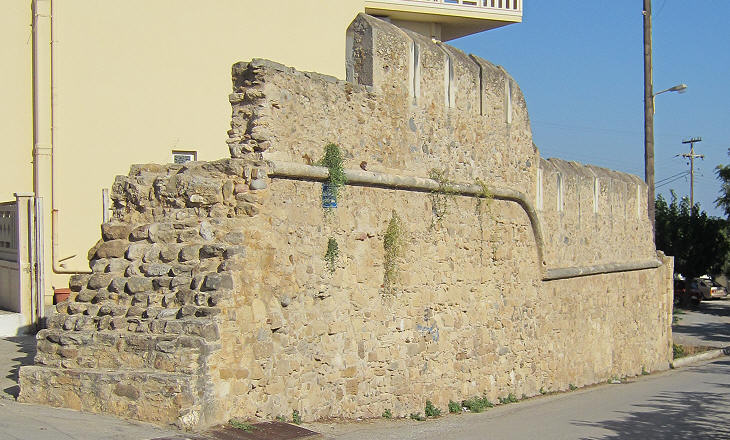  What's New! Detailed Sitemap All images © by Roberto Piperno, owner of the domain. Write to romapip@quipo.it. Text edited by Rosamie Moore. Page revised in February 2012. |
  - Grambusa (Gramvousa) - Grambusa (Gramvousa)
Grambusa aka Grabuse (Gramvousa) is an islet very close to the north-western coast of Crete (not many maps show it) and in a strategic position for the control of the channel between Crete and Antikithira (Cerigotto). In 1579 the Venetians built a fortress there to provide protection for their merchant ships in case of attack by Ottoman corsairs. Imeri means tamed whereas another nearby small island is called Agria (wild), because it is totally void of any signs of human presence.
The fortress was built on a rock which could be accessed (with difficulty) only from one side. Grambusa did not have a proper harbour, but the rock was high enough to shelter the ships from meltemi, the strong dominant north wind that blows in the Aegean Sea from May to September, which was the sailing season in the past.
Today Grambusa is completely unpopulated, but in summer it is easy to reach because one day cruises departing from Kissamos/Kasteli stop at the island for about 90 minutes. The time is sufficient to visit the fortress along a steep and winding path.
During the long War of Crete (1645-69) the Ottomans did not attempt to seize Grambusa and this allowed the Venetians, who retained possession also of the fortress of Suda, to supply Candia during its long siege. When eventually the Venetians agreed to surrender that town they retained control of Grambusa, Suda and Spinalonga, another fortress on an islet opposite the north-eastern coast of Crete.
In 1691 the Venetians, after having seized Malvasia, the last Ottoman fortress in the Peloponnese, decided to make an attempt to reconquer Crete. This decision was not unexpected and the Ottomans realized that control of Grambusa was crucial for the defence of the island. The fortress had the fame of not being pregnable, but the Ottomans managed to bribe one of the chief officers and with his help they entered the fortress and captured its Venetian commander. The traitor, a mercenary, spent the rest of his life at Constantinople where he was known as Capitan Grabuse.
At the Peace of Passarowitz (1718) Venice acknowledged the loss of all its possessions in the Aegean Sea. The peace marked the end of the wars between the Republic and the Ottoman Empire; in this new context the importance of Grambusa greatly declined. In 1825 a group of Cretan insurgents seized the fortress; an Egyptian expeditionary corps quelled the Cretan rebels, but Grambusa, notwithstanding a long siege, was not retaken.
Because of the total lack of resources of the small island, its occupiers resorted to piracy; they did not attack Egyptian and Ottoman ships only, but also those sailing under other flags. In January 1828 the pirate ships were sunk by a British and French fleet. A frigate commanded by Capt. Charles Yorke (from 1834 4th Earl of Hardwicke) was posted at Grambusa to ensure the island did not become a nest of pirates again. The fortress was returned to the Ottomans after they recognized Greece as an independent country.
In recent years Crete has experienced a dramatic development of its tourist facilities, which however has not affected this remote corner of the island. After the cruise ships have returned to Kissamos, only ghosts watch over the abandoned fortress, the rusty wreck of a small steamer and the silent lagoon of Balos.
Castello (Kasteli)
The small town of Kasteli (also known as Kissamos) in north-western Crete retains in its name a memory of the small Venetian fortress which protected it. In 1646 the Ottomans easily seized it and cut to pieces forty soldiers who refused to surrender. Unfortunately for many years the Venetian walls were not considered worthy of protection so there is not much left of them. Introductory page on the Venetian fortresses in Crete Rettimo (Rethymno) An Excursion to Moni Arkadi Candia (Iraklion) La Canea (Xania) and Souda Spinalonga An Excursion to Kritsa Sittia and Paleocastro Castelfranco (Frangokastelo) and other castles on the southern coast Introductory page on the Venetian fortresses You may refresh your knowledge of the history of Venice in the Levant by reading an abstract from the History of Venice by Thomas Salmon, published in 1754. The Italian text is accompanied by an English summary. Clickable Map of the Ionian and Aegean Seas with links to the Venetian fortresses and to other locations (opens in a separate window) |
